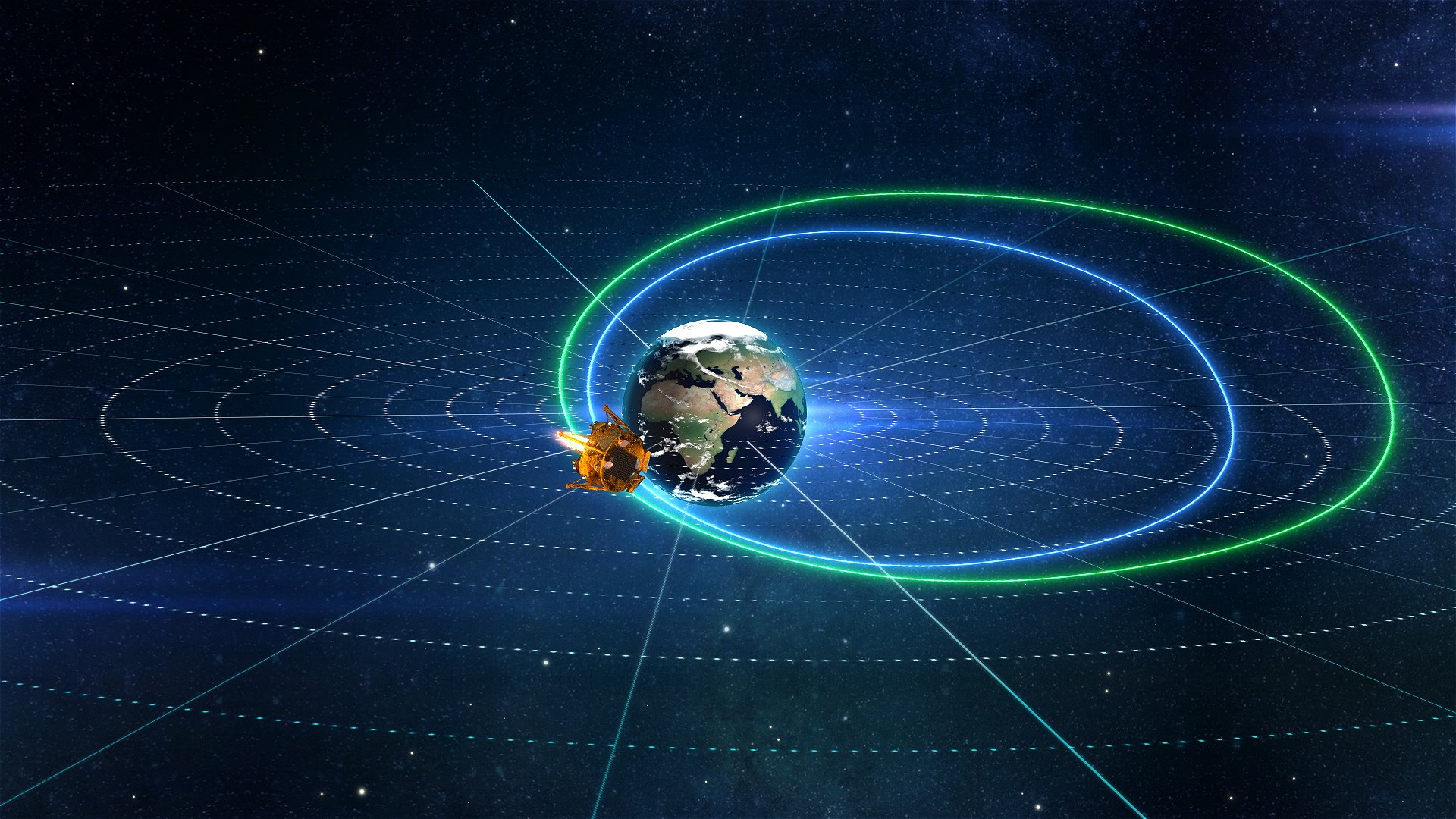
Israel's Beresheet moon lander has performed its first in-space maneuver.
The 5-foot-tall (1.5 meters) Beresheet, which launched to Earth orbit atop a SpaceX Falcon 9 rocket on Thursday (Feb. 21), fired up its main engine for the first time yesterday (Feb. 24) at 6:29 a.m. EST (1129 GMT; 1:29 p.m. Israel time), mission team members said.
"The 30-second maneuver was made at a distance of 69,400 km [43,100 miles] from Earth and will increase the spacecraft's closest point of approach to Earth to a distance of 600 km [370 miles]," Beresheet's handlers wrote in an update Sunday.
Related: Israel's 1st Moon Lander Beresheet in Pictures
The engine burn "took into account the problems that were identified in the star trackers after launch," they added.
Beresheet will perform several more such burns over the coming weeks to push the apogee — the most distant point from Earth — of its elliptical orbit outward, toward the moon. Indeed, the next maneuver is scheduled for today (Feb. 25), mission officials said.
If all goes according to plan, Beresheet — whose name means "in the beginning" in Hebrew — will arrive in lunar orbit on April 4 and touch down on the moon's surface one week later.
Get the Space.com Newsletter
Breaking space news, the latest updates on rocket launches, skywatching events and more!
The lander will do a bit of science work during its two-Earth-day surface mission, but Beresheet's main objectives are to advance Israel's space program and to inspire young people, especially those in that tiny Middle Eastern nation, to care more about science, technology, engineering and math.
Beresheet also aims to show that ambitious exploration feats can be achieved on the cheap. The mission's total cost, including launch, is about $100 million, team members have said.
Beresheet is a joint project of the nonprofit group SpaceIL and the company Israel Aerospace Industries. SpaceIL began as a competitor in the Google Lunar X Prize (GLXP), a $30 million contest that asked privately funded teams to put a robot on the moon, have it move 1,650 feet (500 meters) and return high-resolution imagery to Earth.
The GLXP ended last year without a winner, but some of the former teams, including SpaceIL, kept shooting for the moon. Beresheet was originally designed to hop, in keeping with contest requirements. But mission team members have said they now plan to keep Beresheet stationary on the moon, as moving it around would introduce additional risks.
Editor's note: A previous version of this story mistakenly used "perigee" instead of "apogee," and incorrectly converted 600 km to miles. The story has been corrected.
Mike Wall's book about the search for alien life, "Out There" (Grand Central Publishing, 2018; illustrated by Karl Tate) is out now. Follow him on Twitter @michaeldwall. Follow us on Twitter @Spacedotcom or Facebook.
Join our Space Forums to keep talking space on the latest missions, night sky and more! And if you have a news tip, correction or comment, let us know at: community@space.com.

Michael Wall is a Senior Space Writer with Space.com and joined the team in 2010. He primarily covers exoplanets, spaceflight and military space, but has been known to dabble in the space art beat. His book about the search for alien life, "Out There," was published on Nov. 13, 2018. Before becoming a science writer, Michael worked as a herpetologist and wildlife biologist. He has a Ph.D. in evolutionary biology from the University of Sydney, Australia, a bachelor's degree from the University of Arizona, and a graduate certificate in science writing from the University of California, Santa Cruz. To find out what his latest project is, you can follow Michael on Twitter.









